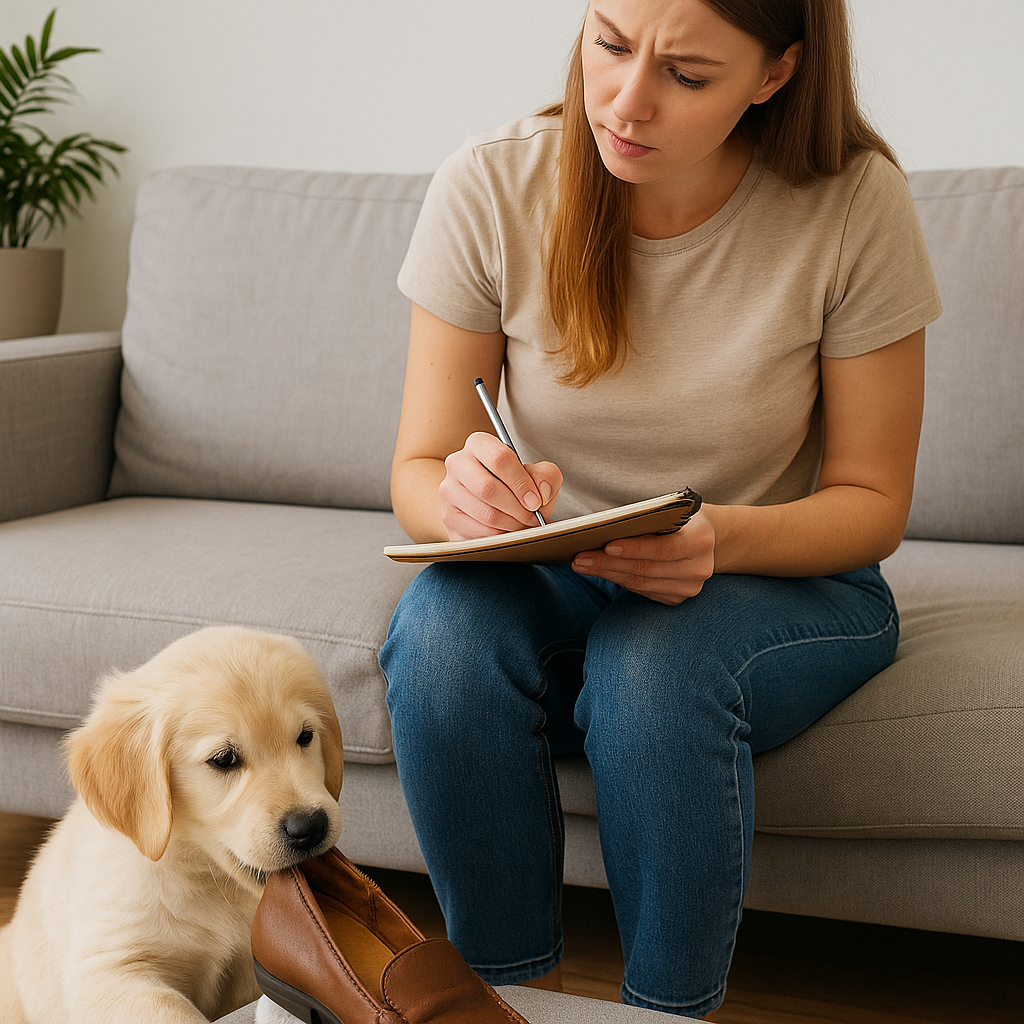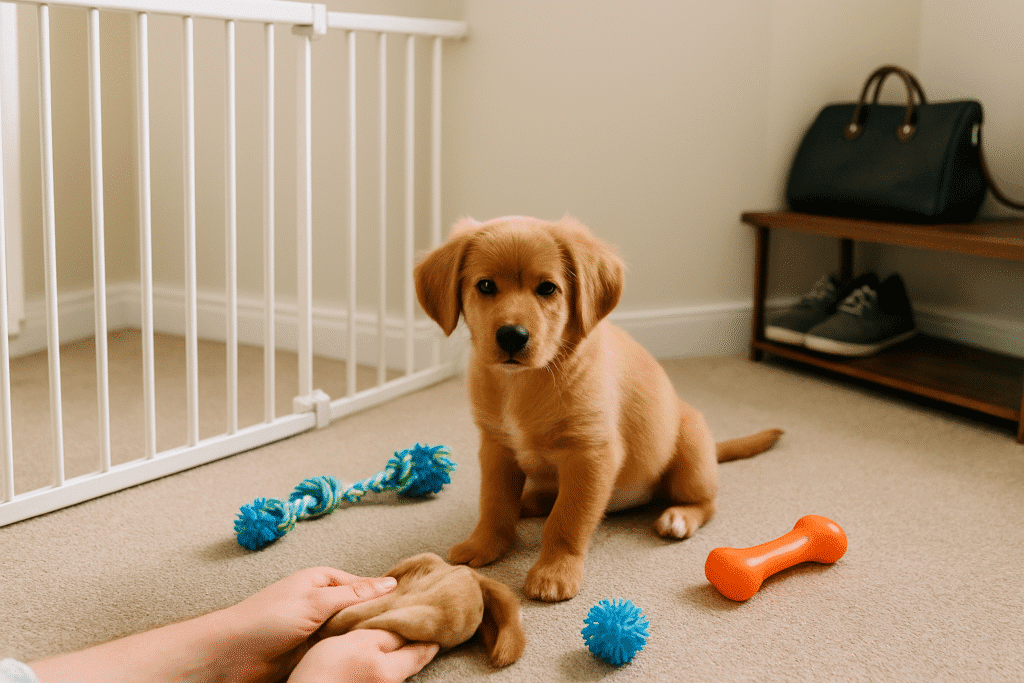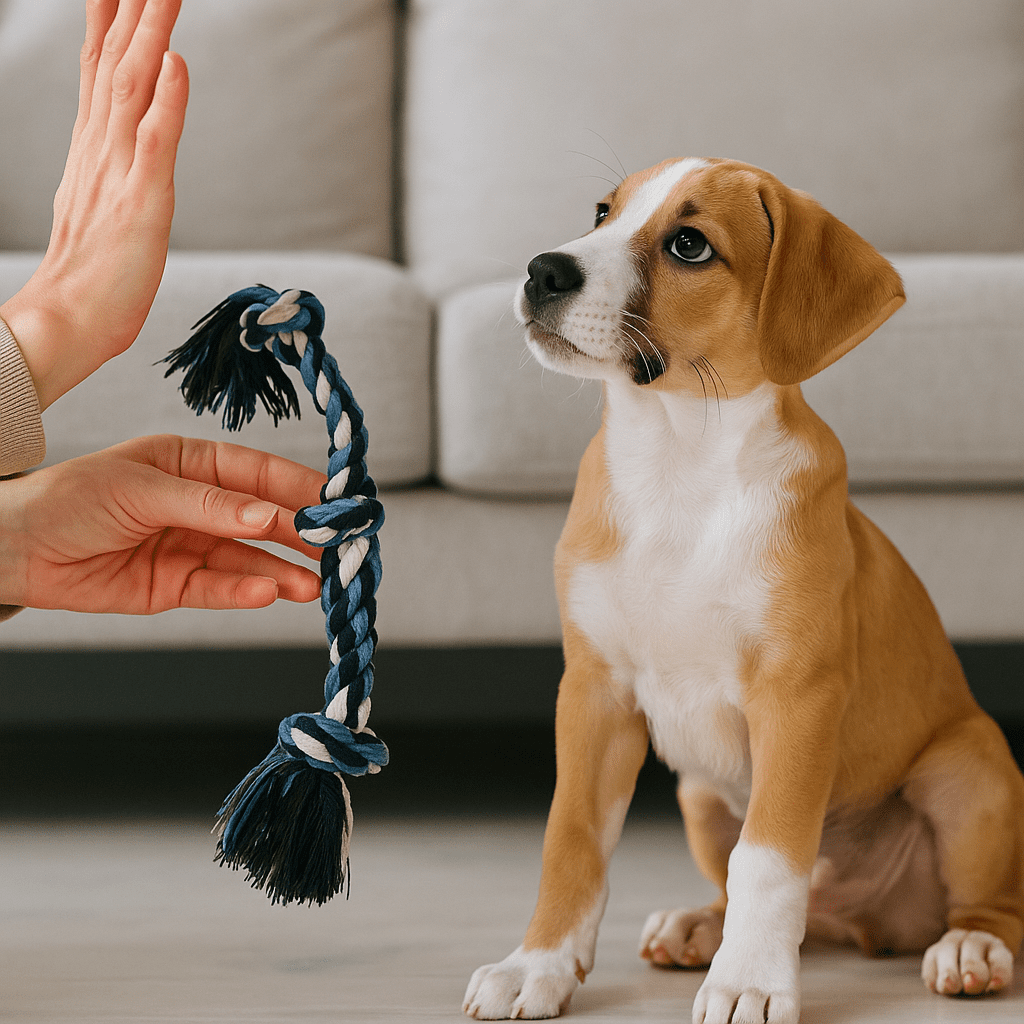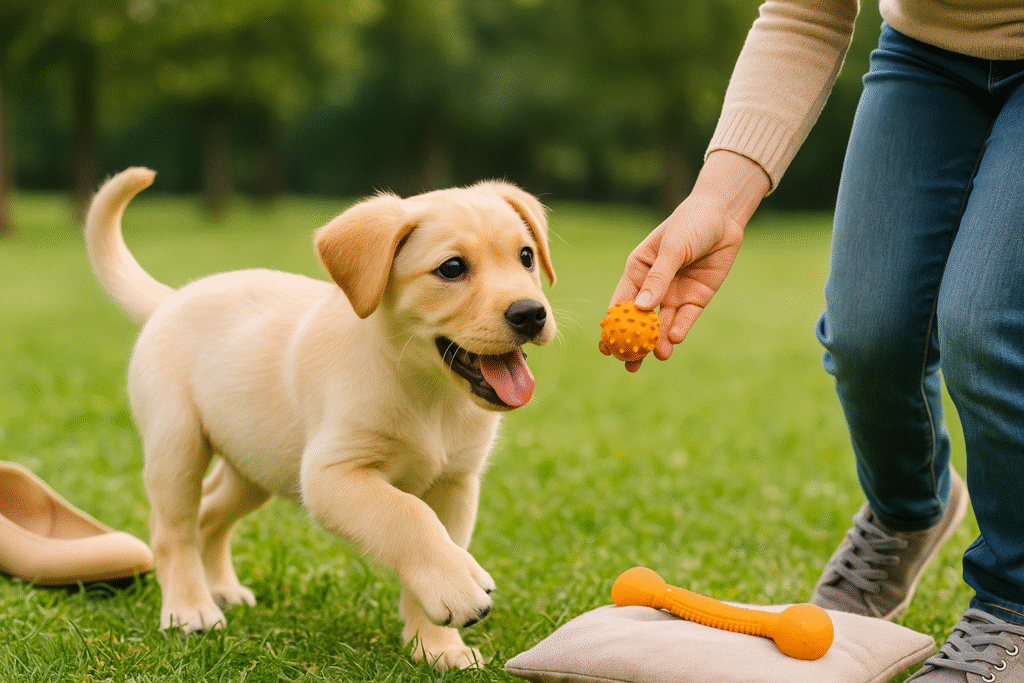Want to stop puppy chewing quickly? Learn how to prevent destructive biting, redirect your puppy’s energy, and teach proper chewing habits with easy, proven training hacks. This 5-day guide will help you create a calm, well-behaved pup and save your furniture in the process.
Introduction: Why Puppies Chew and How to Stop It Fast
The urge to chew is natural for puppies — it helps with teething, stress relief, and exploration. However, when left unmanaged, it can lead to chewed shoes, furniture, and frustration. The good news? You can stop puppy chewing within a week by combining consistent training, proper redirection, and the right tools.

Day 1: Identify Why Your Puppy Is Chewing
Before you correct the behavior, understand the cause. Puppies chew for different reasons — teething pain, boredom, anxiety, or curiosity. Observe when and what your puppy chews. Is it when you’re gone? When they’re bored? Recognizing the “why” is the foundation for success.
- Teething discomfort: Puppies between 3–6 months chew to relieve gum pain.
- Boredom: Lack of mental stimulation leads to destructive chewing.
- Separation anxiety: Some pups chew as a coping mechanism when left alone.
Day 2: Set Up a Controlled Environment
To stop puppy chewing, you must manage the environment. Create a safe space where only appropriate chew toys are accessible. Use baby gates or exercise pens to block access to valuable furniture or shoes. Supervision is key during the first few days of training.
Tip:
Always keep 2–3 types of chew toys available — such as rubber toys, frozen washcloths, or rope toys. This variety prevents boredom and satisfies teething urges.
Day 3: Redirect the Chewing Behavior
When your puppy starts chewing on something inappropriate, calmly interrupt and replace it with an approved toy. Praise the moment they switch — positive reinforcement is essential. Never yell or punish; this creates confusion and anxiety.
Consistency is key. Every time you see unwanted chewing, guide them toward the correct object. This repetition helps them learn what’s acceptable.

Day 4: Teach the “Leave It” Command
The “Leave It” cue is one of the most effective ways to stop puppy chewing. Start with treats in your hand and let your puppy sniff. When they attempt to grab it, close your hand and say “Leave it.” Once they pull back or lose interest, reward them with a different treat. Gradually increase difficulty by placing items on the floor.
Reinforce Good Behavior
Whenever your puppy chews the right toy, reward them immediately. This clear communication builds strong habits. You can also use chew deterrent sprays on furniture to make it less tempting.
Day 5: Exercise and Mental Stimulation
A tired puppy is a well-behaved puppy. Daily walks, short training sessions, and puzzle feeders can reduce unwanted chewing caused by excess energy. Incorporate 10–15 minutes of mental stimulation, such as scent games or obedience drills, twice a day.
At this stage, most puppies will understand boundaries and chew only on designated toys. Continue reinforcing for at least two weeks for lasting results.
Choosing the Right Chew Toys for Training
Investing in high-quality, safe chew toys makes training smoother. Look for durable, non-toxic materials that promote dental health. Avoid rawhide and small bones that can splinter or cause choking hazards.
- KONG Classic: Great for stuffing treats and keeping your pup entertained.
- Nylabone Puppy Teething Rings: Helps soothe gums while preventing boredom.
- Frozen carrot sticks: Natural, safe, and refreshing during teething stages.
For more product ideas, see our Puppy Training Tools Guide for interactive toy recommendations.

Common Mistakes to Avoid When Trying to Stop Puppy Chewing
Many owners unintentionally reinforce bad habits. Here are key pitfalls to avoid:
- Leaving shoes or tempting items within reach
- Yelling or physically punishing your puppy
- Not offering enough exercise or mental stimulation
- Being inconsistent with rules
When to Seek Professional Help
If your puppy’s chewing is excessive or accompanied by whining, pacing, or drooling, it may be anxiety-driven. Consult a certified dog trainer or veterinarian for behavioral evaluation. Persistent chewing could also indicate dental pain or underlying stress.
For more insights on puppy behavior, check our post on Separation Anxiety in Dogs.
Nutrition’s Role in Reducing Chewing
Surprisingly, nutrition plays a part in behavioral health. Ensure your puppy’s diet provides essential vitamins, minerals, and omega fatty acids. Deficiencies can lead to restlessness and stress-induced chewing. Consider adding Dog Multivitamins to support growth and mental balance.
Proven Quick Remedies to Stop Puppy Chewing
If you need rapid results, combine these three tactics:
- Redirect unwanted chewing immediately.
- Offer frozen teething toys during high-chew hours.
- Use safe deterrent sprays on furniture.
Within five days, most puppies adapt to proper chewing behavior with these methods.

FAQs About How to Stop Puppy Chewing
1. How long does it take to stop puppy chewing?
Most puppies learn acceptable chewing within 5–10 days of consistent training and supervision.
2. What age do puppies stop teething?
Teething typically ends by 6 months, though some may chew for comfort even afterward.
3. Is chewing a sign of anxiety?
Yes, chewing can indicate stress or separation anxiety. Addressing the root cause helps minimize destructive habits.
4. Are deterrent sprays safe?
Yes, pet-safe sprays made with natural ingredients like bitter apple or citrus are safe and effective.
5. Should I crate my puppy to stop chewing?
Crating can help when used properly — it provides a safe space and limits access to forbidden items, but never use it as punishment.
Conclusion: Stop Puppy Chewing Fast — Start Training Today
Teaching your puppy what’s appropriate to chew is one of the first and most rewarding parts of puppy training. With the right mix of redirection, rewards, and patience, you can stop puppy chewing quickly and enjoy a calm, happy companion for life.
Outbound Source: AKC – How to Stop Chewing (training guide)
CTA: Want to learn more effective training methods? Check out our Crate Training Guide for step-by-step techniques that build discipline and trust.

